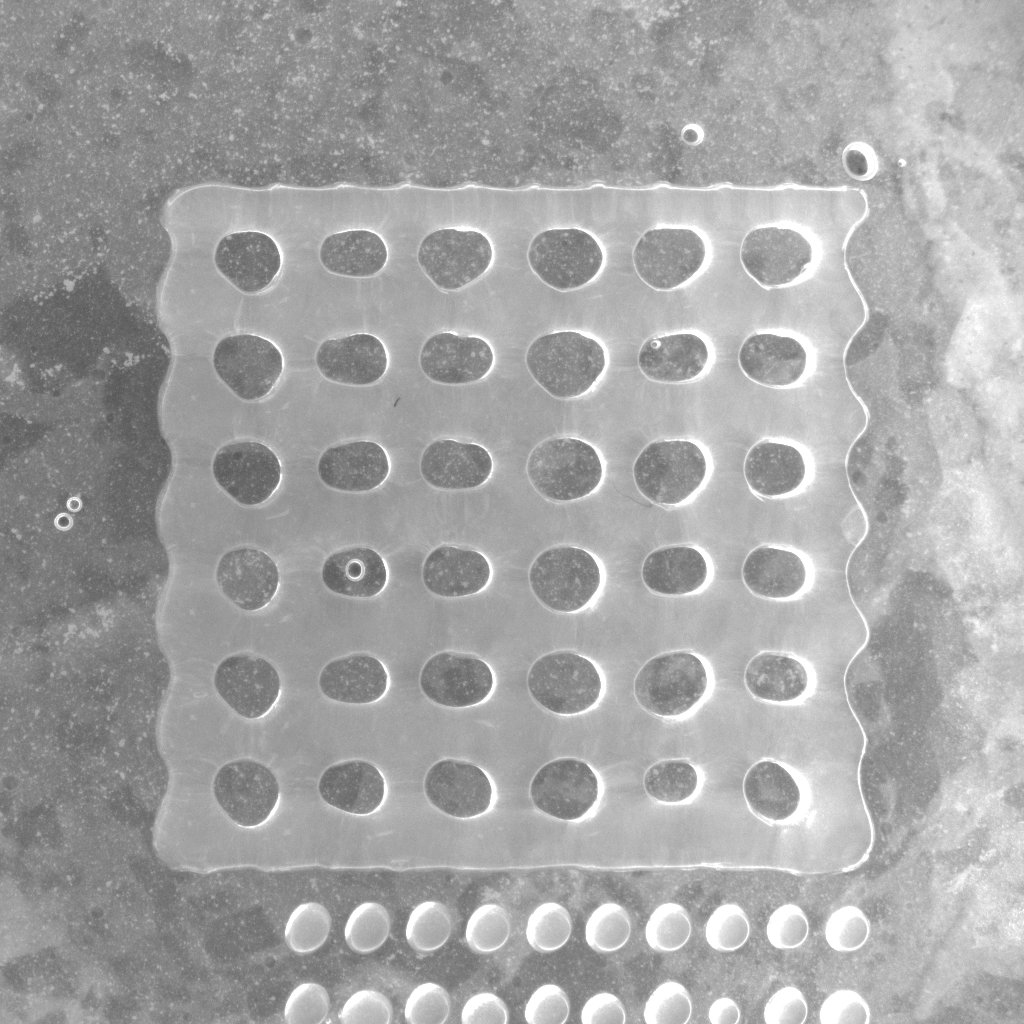Research
There are three major research thrusts in the Dr. Mei's lab:
1. Combinatorial Development of Functional Synthetic Biomaterials

Synthetic biomaterials hold enormous potential to make major impacts in biomedicine. However, the current synthetic biomaterials usually lack the biological functions of the natural biomaterials (e.g., collagens, fibronectins). It can be attributed to the low binding affinity of the synthetic biomaterials to the cell surface receptors. To address this problem, the research in my lab has been focused on screening peptide-functionalized synthetic hydrogel combinatorial microarrays, which can enable the rapid identification of "hit" materials with high binding affinity for cell surface receptors. This would allow for the development of materials-directed stem cell fate commitment as well as the next generation of tissue-engineering scaffolds.
2. Bioprinting
 Bioprinting holds remarkable promise for tissue engineering as it provides a rapid and robust approach to assemble biomaterials and cells in a spatially defined manner. Little previous research has been devoted to developing bioprinting compatible materials (bioinks) for tissue biofabrication. During the past two years, my lab has developed a platform bioink based on the engineered alginate hydrogels. The current researches have been focused on the development bioinks capable of promoting microvasculature formation, and use them to fabricate pre-vascularized tissue engineering constructs.
Bioprinting holds remarkable promise for tissue engineering as it provides a rapid and robust approach to assemble biomaterials and cells in a spatially defined manner. Little previous research has been devoted to developing bioprinting compatible materials (bioinks) for tissue biofabrication. During the past two years, my lab has developed a platform bioink based on the engineered alginate hydrogels. The current researches have been focused on the development bioinks capable of promoting microvasculature formation, and use them to fabricate pre-vascularized tissue engineering constructs.
3. Nanobiotechnology
 Cardiac tissue engineering holds remarkable promise to treat cardiovascular diseases, the leading cause of death and disability worldwide. During the past decades, various scaffolds and hydrogels have been utilized to prepare cardiac tissue engineering constructs. While these scaffolds can provide tissue-like 3D microenvironments, current scaffolding materials lack the matched physical/ chemical/biological properties with the native myocardium. To address this, we recently pioneered the utilization of silicon-based nanomaterials to facilitate functional assembly of hIPSC-derived cardiomyocytes to prepare human cardiac spheroids (3D spherical micro-tissues) for tissue engineering and drug testing applications.
Cardiac tissue engineering holds remarkable promise to treat cardiovascular diseases, the leading cause of death and disability worldwide. During the past decades, various scaffolds and hydrogels have been utilized to prepare cardiac tissue engineering constructs. While these scaffolds can provide tissue-like 3D microenvironments, current scaffolding materials lack the matched physical/ chemical/biological properties with the native myocardium. To address this, we recently pioneered the utilization of silicon-based nanomaterials to facilitate functional assembly of hIPSC-derived cardiomyocytes to prepare human cardiac spheroids (3D spherical micro-tissues) for tissue engineering and drug testing applications.
 Synthetic biomaterials hold enormous potential to make major impacts in biomedicine. However, the current synthetic biomaterials usually lack the biological functions of the natural biomaterials (e.g., collagens, fibronectins). It can be attributed to the low binding affinity of the synthetic biomaterials to the cell surface receptors. To address this problem, the research in my lab has been focused on screening peptide-functionalized synthetic hydrogel combinatorial microarrays, which can enable the rapid identification of "hit" materials with high binding affinity for cell surface receptors. This would allow for the development of materials-directed stem cell fate commitment as well as the next generation of tissue-engineering scaffolds.
Synthetic biomaterials hold enormous potential to make major impacts in biomedicine. However, the current synthetic biomaterials usually lack the biological functions of the natural biomaterials (e.g., collagens, fibronectins). It can be attributed to the low binding affinity of the synthetic biomaterials to the cell surface receptors. To address this problem, the research in my lab has been focused on screening peptide-functionalized synthetic hydrogel combinatorial microarrays, which can enable the rapid identification of "hit" materials with high binding affinity for cell surface receptors. This would allow for the development of materials-directed stem cell fate commitment as well as the next generation of tissue-engineering scaffolds.

